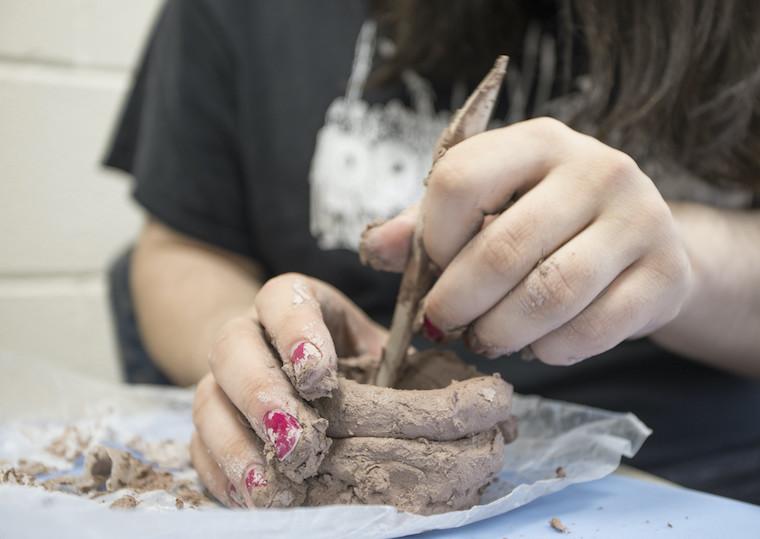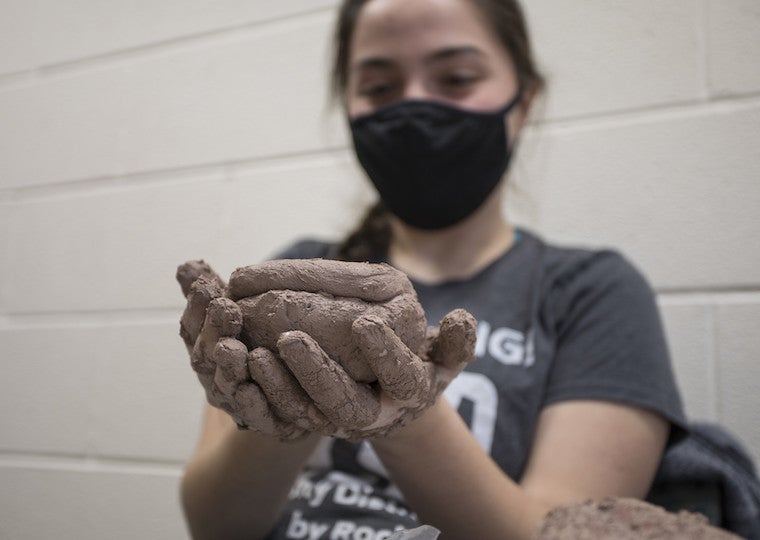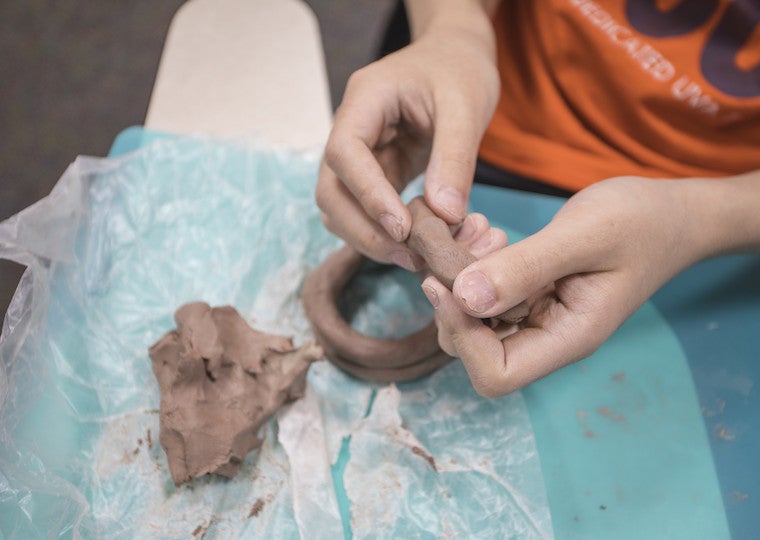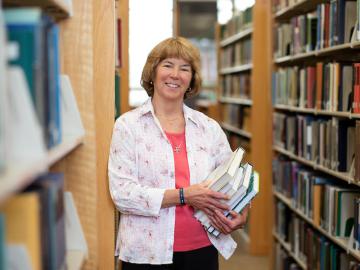Campus News
This Week in Photos: Ancient Methods
April 30, 2021
Yvonne Gay

A student’s clay-caked hands in an anthropology course serve as inspiration for this week’s photo series.
Students take their seats and form a wide circle in the middle of a King Hall classroom. Each person takes a lump of clay and pulls smaller pieces from it, rolling long round strips as the sticky material coats their fingers. The strips are stacked on top of each other and manipulated into a circular shape. Creating a perfect bowl isn’t the objective in this classroom lab.
A key component in the Archaeological Lab Methods course Professor of Anthropology Amy Margaris teaches is for students to gain a better understanding of the materials and methods used by ancient civilizations. Readings in practical and theoretical problems in archaeology help guide student’s survey of basic methods used for artifact analysis, and for recording, managing, and interpreting archaeological data. The course also considers emerging trends in archaeological data sharing and collections building that are facilitated through the use of digital media.
See more photos on Oberlin’s Flickr page.





Tags:
You may also like…
Nominate Candidates for 2025 Distinguished Service Award
October 22, 2024
All nominations must be submitted by November 18.
Shirley Sikora, Night Manager of the ’Sco, Dies at 65
June 11, 2024
Longtime employee was beloved by student workers and all who frequented the Wilder Hall club.
Alison Ricker, Former Science Librarian, Dies at 70
May 16, 2024
Forty-year employee led key library transitions, was active in numerous campus organizations.


